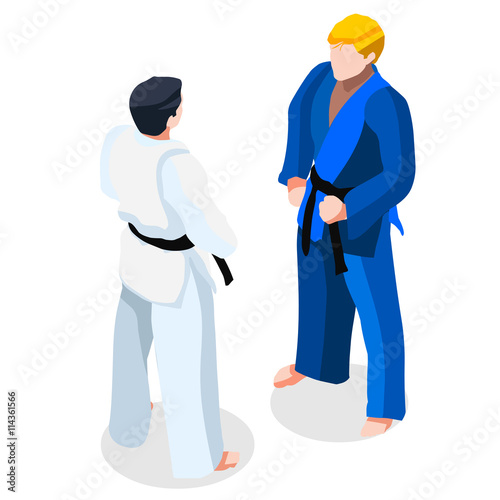Powerful Protection Techniques With Martial Arts Educating
Powerful Protection Techniques With Martial Arts Educating
Blog Article
Produced By-Skipper Husum
Have you ever found yourself in a circumstance where you really felt endangered and wished you recognized exactly how to protect yourself?
Visualize this: you're walking alone at night when all of a sudden, a stranger approaches you with hostile intent. In premier martial arts belt order , having a strong understanding of effective martial arts techniques for protection can make all the difference.
However what are these methods? Which ones should you learn to ensure your safety? In this conversation, we will certainly discover a series of techniques, from strikes and kicks to joint locks and throws, as well as defensive maneuvers and leaves.
By the end, you'll have a clearer understanding of the abilities that can equip you to protect on your own in possibly hazardous circumstances.
So, let's dive in and discover the globe of efficient martial arts techniques for self-defense.
Strikes and Kicks
When it comes to protection, strikes and kicks are necessary techniques that can properly incapacitate an assailant.
In an unsafe circumstance, your capacity to strike with accuracy and power can be the difference between getting away unscathed and coming to be a target.
Strikes include using your fists, elbow joints, knees, or perhaps your head to supply powerful blows to vulnerable areas of the body, such as the nose, throat, or groin.
Kicks, on the other hand, use the toughness of your legs to supply powerful strikes to a challenger's legs, torso, or head.
By incorporating appropriate technique with speed and accuracy, you can promptly disable an enemy and produce an opportunity to run away.
Keep in mind to aim for vulnerable locations and utilize your body's all-natural tools to your advantage.
Joint Locks and Throws
After grasping strikes and kicks, you can further enhance your self-defense abilities by finding out joint locks and throws. Joint locks are methods that entail adjusting your challenger's joints, creating pain or immobilization.
Throws, on the other hand, involve utilizing your opponent's energy versus them to take them to the ground.
These techniques not just provide you with reliable means to regulate and counteract an aggressor, but they also impart a sense of confidence and empowerment.
By mastering please click the next webpage and throws, you'll have the ability to quickly and successfully immobilize a challenger, providing you the upper hand in any type of self-defense circumstance.
Bear in mind, self-defense is about protecting yourself and others, and these methods can assist you do simply that. So, why wait?
Beginning learning joint locks and tosses today and be prepared for any situation that comes your means.
Defensive Maneuvers and Escapes
To effectively safeguard yourself in a hazardous circumstance, it's vital to grasp protective maneuvers and gets away. These techniques are developed to assist you evade and get rid of an aggressor quickly and successfully.
One reliable defensive maneuver is the sidestep. By tipping sideways, you can avoid an oncoming attack and develop a possibility to counterattack.
One more helpful method is the duck and cover. This involves bending down and covering your head and crucial areas with your arms. It can protect you from strikes and allow you to assess the circumstance and plan your next action.
Furthermore, discovering escapes such as wrist grabs, bear hugs, and chokeholds can help you break without an aggressor's grasp and create distance.
Verdict
In the world of protection, grasping effective martial arts methods is crucial. Whether it's the quick strikes and effective kicks that leave your challenger stunned, the proficient execution of joint locks and tosses that debilitate them, or the protective maneuvers and gets away that give you freedom, these methods are like a lively tapestry of defense.
Like a proficient musician with a brush, you can paint a picture of safety and security and confidence with every step you make.
